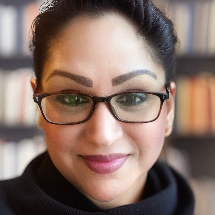Learn / Energy Therapy: Healing for the Mind, Body, and Soul
Energy Therapy: Healing for the Mind, Body, and Soul


January 29th, 2024| Clinically Reviewed by
Key Points
- Energy therapy channels internal energy to promote healing.
- Energy therapies include physical, mental, and spiritual practices.
- Energy therapies can combine with medical interventions for recovery.
Energy therapies use holistic practices to heal the mind, body, and spirit through balancing internal energy flow. Many of these therapies have been around for thousands of years in different cultures.
Recently, there has been a shift to find physical and spiritual nourishment outside of Western medicine. Energy therapies can be helpful for healing many types of conditions, ailments, and personal issues.
Understanding Energy Healing
Energy healing, the foundational aspect of energy therapy, channels energy to and through the patient to restore their energy balance1. When something disrupts the natural flow of energy in your body, negative physical, mental, and spiritual effects arise.
Each energy therapy takes a unique approach to aligning the energy in your body. Energy therapists may use their hands, needles, crystals, and more. For example, acupuncture uses thin needles to stimulate energy points and positively influence your flow of energy.
Exploring Subtle Energy Systems
The flow of energy, called Qi or Prana, is your vital life source that these therapies influence.
Qi, a part of Chinese medicine, is energy that flows through a network of meridians (or pathways)2. When energy is disrupted, the meridians will be off balance. Tai chi, acupuncture, Reiki, and Qigoing support the flow of Qi and enhance well-being. Even rearranging your home to harmonize your energy, also known as Feng Shui, will help your Qi.
Indian culture calls Prana your fundamental life force, and chakras are central points in the body that help regulate Prana. Each chakra has specific physical, emotional, and spiritual aspects, and when a chakra is out of balance, so are certain aspects of your life. Practices such as meditation and breathwork, which are at the core of yoga, balance and optimize the flow of Prana within the body.
An aura reading can also determine if your energy is flowing well. Your aura, a layer of colors vibrating from you that aura readers can see, shows your well-being and any blocks that need to be addressed2. You can then work with the facilitator, and other medical and mental health professionals, to make any changes to improve your health.
Types of Energy Therapy
While each energy therapy uses a different method to align your vital energy, they can all help you discover pain points and unlock a healthier you.
Acupuncture
During acupuncture sessions, an acupuncturist inserts thin needles on different meridians in the body to correct Qi flow. This practice could reduce lower back pain, arthritis, migraines, and nausea3. Research shows that acupuncture can be a great addition to other medically-based therapies, and in some cases it’s better at reducing symptoms than the medical alternative.
Reiki
Reiki practitioners use their hands to channel and direct Qi to promote well-being. Studies found that Reiki activates the parasympathetic nervous system4 (responsible for “rest and digest” functions5), making it a great complementary therapy for people who have chronic pain, cancer, and more. In fact, Reiki can reduce depression and anxiety and boost self-esteem, assisting in an illness’ rigorous treatment process.
Qigong
Qigong uses intentional breathing, relaxed movements, and meditation to balance Qi. Using this practice, people can improve their overall health, seeing cardiovascular and pulmonary benefits6. This boost of physical health can help the recovery process for chronic illnesses and cancer patients, as well. It can also provide benefits to just about anyone, boosting their immune systems and sleep cycles.
Tai Chi
Tai chi utilizes elements of Qigong to channel Qi and bolster physical fitness through intentional, flowing movements. It’s a form of martial arts and could be described as “meditation in motion7.” This practice can help maintain strength, flexibility, and balance, making this ideal for chronic pain recovery.
Tai chi can also serve as a preventative practice for younger, healthier populations. Maintaining muscle strength, joint health, and flexibility can reduce the risk of developing certain diseases8 like diabetes, heart disease, and dementia; however, even older patients with compromised health can see positive results from tai chi6.
Yoga
Yoga uses physical postures, breathwork, and meditation to optimize the flow of Prana and harmonize your chakras. Different postures cultivate different energies, so you can move your body in a way that aligns with your current energetic needs. The goal of yoga is to bring greater awareness to your physical self, your breath, and your energy.
Practicing yoga not only increases physical strength and flexibility, but it also improves respiratory and cardiovascular health9. Yoga can alleviate stress, anxiety, depression, and chronic pain. It may improve sleep patterns, as well. This practice can benefit your overall quality of life.
Explore Yoga Treatment Centers
Integrating Energy Therapy into Recovery
Although energy therapies are not a replacement for medical interventions, these practices can greatly facilitate your recovery and improve your quality of life. There has been a growing acceptance for energy therapies in the medical community, even some hospitals have started offering energy sessions on-site with trained practitioners.
Your holistic recovery could look like attending 5 medical appointments per week and 2 Reiki sessions, as well. You can work with your care team to see which energy therapy you resonate with the most, and you can begin to incorporate mind, body, and spirit healing into your recovery.
Seeking an Energy Practitioner
Picking the right energy therapist who is properly trained and aligns with your goals can help you see more positive effects from these practices.
First, check with your primary care practitioner or your medical specialist to ensure that energy therapy will complement your treatment plan. They also may be able to give you references to assist in your search.
Your energy therapist should have training and certifications in their respective practice. For example, acupuncturists usually have a masters or doctorate in acupuncture and Chinese medicine, and Reiki masters are trained up to level 3 (the highest level).
When you meet with your potential energy practitioner to see if they’re a fit, consider asking questions such as
- What does one of your sessions look like?
- How will you channel my flow of energy?
- How do you create a calm, healing environment?
- Do you have experience working with issues similar to mine?
- What are the potential benefits? How many sessions do I need to attend before I start to see benefits?
Continue to have check-ins with your energy therapist throughout your sessions. Open communication can help you get the most out of your treatment goals. And of course, going into the sessions with an open mind will help your outcomes.
Self-Practice and Techniques
You can practice energy therapy principles in your daily life, even without professional training.
You may practice meditation to become more self-aware and grounded in the present moment. During meditation, you can do breathing exercises such as box breathing (inhale for 4 seconds, hold for 4 seconds, exhale for 4 seconds, and hold for 4 seconds before inhaling again) to relax and feel connected to your body. You may also mentally visualize a calming scene, a moment where you felt loved, and things that make you happy during this practice.
You can dedicate just 10-15 minutes per day to energy therapy techniques such as these. Focusing on the connection between your mind, body, and spirit can help you create the balanced, healthy life you desire. Healing is accessible, it’s simply learning to access it within yourself.
-
What is energy healing? (2023, July 11). EverydayHealth.Com. https://www.everydayhealth.com/integrative-health/energy-healing/guide/
-
How you can benefit from having your aura read – ledger. (n.d.). Retrieved December 11, 2023, from https://campuspress.yale.edu/ledger/how-you-can-benefit-from-having-your-aura-read/
-
Van Hal, M., Dydyk, A. M., & Green, M. S. (2023). Acupuncture. In StatPearls. StatPearls Publishing. http://www.ncbi.nlm.nih.gov/books/NBK532287/
-
McManus, D. E. (2017). Reiki is better than placebo and has broad potential as a complementary health therapy. Journal of Evidence-Based Complementary & Alternative Medicine, 22(4), 1051–1057. https://www.ncbi.nlm.nih.gov/pmc/articles/PMC5871310/
-
Tindle, J., & Tadi, P. (2023). Neuroanatomy, parasympathetic nervous system. In StatPearls. StatPearls Publishing. http://www.ncbi.nlm.nih.gov/books/NBK553141/
-
Jahnke, R., Larkey, L., Rogers, C., Etnier, J., & Lin, F. (2010). A comprehensive review of health benefits of qigong and tai chi. American Journal of Health Promotion : AJHP, 24(6), e1–e25. https://www.ncbi.nlm.nih.gov/pmc/articles/PMC3085832/
-
The health benefits of tai chi—Harvard health publishing. (2010, April 6). Harvard Health. https://www.health.harvard.edu/staying-healthy/the-health-benefits-of-tai-chi
-
Physical activity helps prevent chronic diseases | cdc. (2023, May 8). https://www.cdc.gov/chronicdisease/resources/infographic/physical-activity.htm
-
Woodyard, C. (2011). Exploring the therapeutic effects of yoga and its ability to increase quality of life. International Journal of Yoga, 4(2), 49–54. https://www.ncbi.nlm.nih.gov/pmc/articles/PMC3193654/
Return to Resource Library
Our Promise
How Is RehabPath Different?
We believe everyone deserves access to accurate, unbiased information about mental health and addiction. That’s why we have a comprehensive set of treatment providers and don't charge for inclusion. Any center that meets our criteria can list for free. We do not and have never accepted fees for referring someone to a particular center. Providers who advertise with us must be verified by our Research Team and we clearly mark their status as advertisers.

















